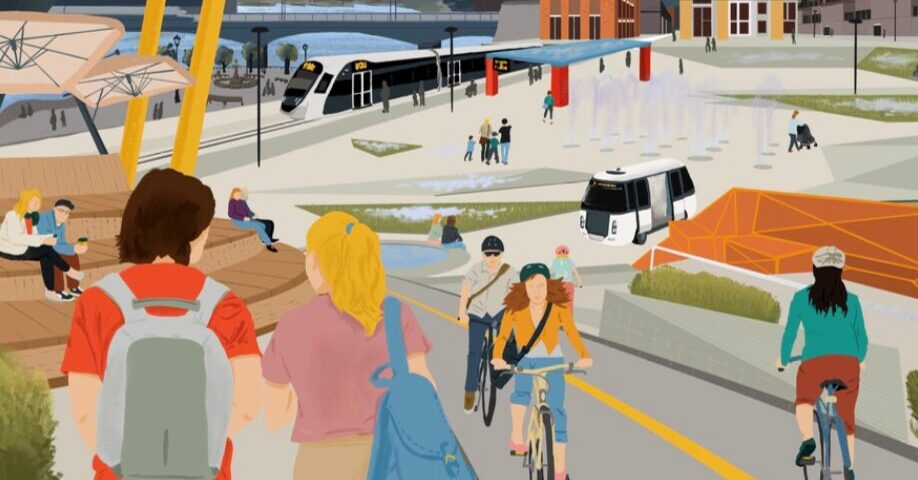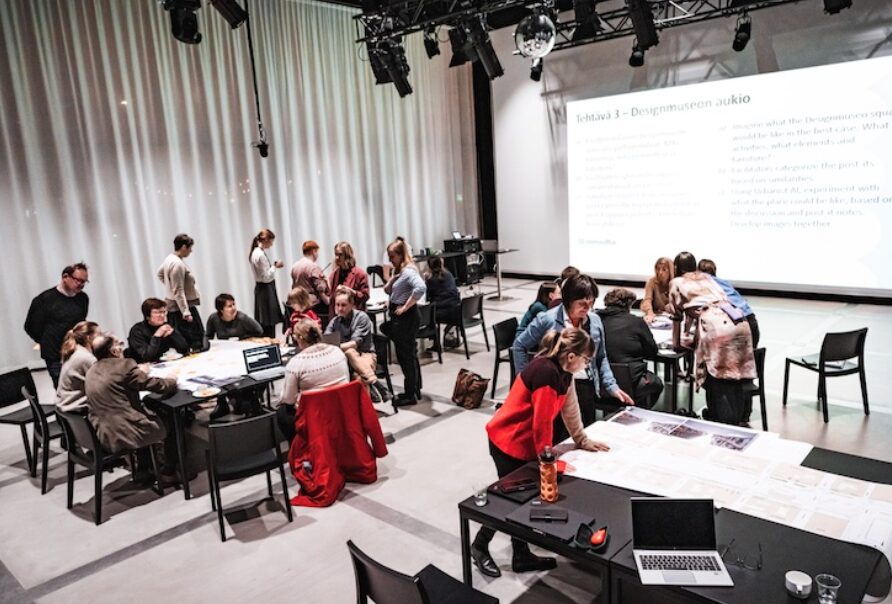IN CONVERSATION WITH URBANISTAI CO-FOUNDER, DAMIANO CERRONE, KEYNOTE SPEAKER AT CITYDNA AUTUMN CONFERENCE IN VALENCIA: ‘BUILDING BLOCKS FOR DESTINATION POSITIVE’
Written in collaboration between City Destinations Alliance and Group NAO.

Picture Source: UrbanistAI, Youth-inspired cityscape: a collaborative vision of Narva’s future urban development
IN CONVERSATION WITH URBANISTAI CO-FOUNDER, DAMIANO CERRONE, KEYNOTE SPEAKER AT CITYDNA AUTUMN CONFERENCE IN VALENCIA: ‘BUILDING BLOCKS FOR DESTINATION POSITIVE’
Written in collaboration between City Destinations Alliance and Group NAO.

In the cosmos of city planning, where the landscape can often seem more alien than human, can AI make urban planning processes more human-centred? UrbanistAI, based in Helsinki and Milan, help cities and destinations reimagine human-centred public spaces using advanced AI tools. In collaborative workshops with local communities, participants can go out into the streets with their smart phones, take pictures of spaces they would like to transform and use guided prompts to generate multiple ideas of how those very spaces could look. Think water fountains, cycle lanes, farmers markets, participants can add elements to see their creative concepts come to life. Traditional online surveys can be replaced with ideation derived from generative AI, as in these workshops, communities are offered a space to generate their unique visualisations and collectively evaluate their shared pool of creative ideas.
We sat down with Damiano Cerrone to understand how AI can transform participatory planning, placing communication at the centre of the process.
How does UrbanistAI offer a critique on current approaches to participatory planning?
I feel participatory planning in its generic form doesn’t really work. At the core of it, we are getting something from the citizens, but what are they getting from us? The main problem with participatory urban planning, and one which can even sometimes cause contradictions, is that people can give an idea, but they can’t then jointly evaluate it. For example, in a recent workshop in Helsinki, many of the participants wanted to create bike lanes – it was the first thing they wanted to do. So, they put this into UrbanistAI, and saw that there would need to be concrete or tarmac on top of cobblestones from the 1800s. They then re-evaluated their idea and decided they would rather keep cycling on cobblestones than have them covered up. This is the added value of running workshops in person, as ideas can be collectively evaluated with architects and designers too.
This possibility to visualise and then evaluate is key to using the tool. UrbanistAI is not necessarily a design tool, but it is a communication tool which allows citizens to better visualise what they had in mind and evaluate their ideas.

Source: UrbanistAI, Co-Designing the Helsinki Summer Streets
How did UrbanistAI become what it is today?
3 years ago, the other co-founder of UrbanistAI Luca Stornaiuolo, was training some of the first AI models with photographs from Venice and other Italian cities for an art exhibition at the Venice Biennale. Luca inputted images of the cities and poetry to an AI model. From this input, the model would envision a walk through Italian cities. And when I saw that – I was in participatory planning at the time, and I thought what if instead of poetry, we use citizens’ ideas?
The proof of concept of UrbanistAI was done with the help of an artist. The very first project we ever did was a master planning project in Narva, Estonia where we worked with over 300 children and artists. We asked the children – using images – what they would like a specific space to look like. We had an artist making visuals from that, drawing the children’s imaginings. It should also be said that the value of this ‘tool’ is not only found in the technology, but the methodology used to deploy UrbanistAI. Successful results can be achieved using an artist turning people’s ideas into drawings, but with geneartive AI, we are able to scale up the process.
When we talk about our imaginations, they’re deeply influenced by our own cultural backgrounds. Considering the biases in data and the diverse cultural contexts UrbanistAI operates in, how do you ensure that your tool is culturally relevant?
We use open-source training sets to build the model, and those open-source training sets are biased. Any generative model is extremely biased. And it’s biased by the number of photos at the scene from a specific place. But if the client has a budget, because unfortunately this needs a large budget, we can tune the AI model according to local culture. We can input a lot of images from that local context, and then the citizens can themselves put tags and descriptions to the images in their own language.

Source: UrbanistAI, Co-Designing the Helsinki Summer Streets
How do you ensure a diverse range of individuals participate in these workshops?
This is something that needs to be thought of very carefully to guarantee an inclusive and democratic process. Our team usually don’t run the workshops, but we train local design studios, public institutions or the moderators who run the workshops. The choice is up to them, but our intention is to transfer our experience from other workshops on how to best enhance democracy and inclusivity. We don’t want to become a company of moderators, but we also don’t want to become a technology company that is just selling licenses.
It seems like you have clear boundaries in where you think the tool is relevant, why is this?
That’s exactly how I want it to be. What we are trying to do is make a technology, for a very specific context, for a very specific reason, and for people to use it in groups. We don’t want to only empower a few people. Photoshop and OpenAI can already turn ideas into visions, but it’s just you alone behind a computer. As I said before, UrbanistAI is not necessarily a design tool, but a communication tool.
For example, it’s interesting to see architects in these workshops. A lot of the ideas that citizens have, the architects would never have thought of. In a recent workshop in Helsinki, the participants said they would like to have swings for adults and a place to dance tango… And the architects were like ‘WHAT?’. The issue in urban planning is that the designers and users rarely meet each other. It’s also important to remember that we as experts have plenty of occasions to build our network, but for communities, technology is doing the opposite – they don’t meet anymore. These workshops are a moment to help the community to strengthen their network and to collectively imagine.